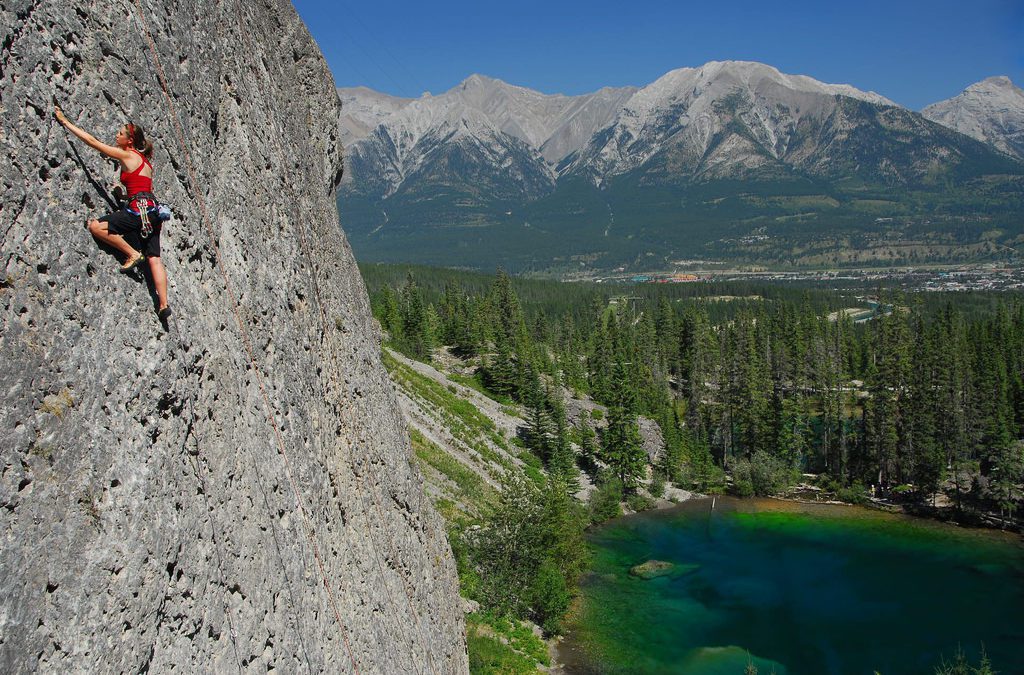The New Covid-19 Climbing Ethics
As everyone returns to the outdoors, how might climbers help keep each other safe? These are the new Covid-19 climbing ethics

As climbers return to their local crags, a new brand of Covid-19 climbing ethics will appear. Between the masked smiles of socially distanced friends and the sometimes-uncomfortable elbow bumps there will be awkward moments. How do we negotiate these complicated times?
Route Crags
For route climbers, the lines behind roped climbs have provided some ambiguity. In the past, a person’s gear might denote their reservation of a route. Although this practice might remain on less popular routes, the days of long-term route reservation may have to come to an end.
Many areas have popular warm up routes that become difficult to access during busy days at the crag. Although everyone should feel welcome to try every route, climbers should consider their ability when climbing a popular line on a busy day. Busy crags will define this summer and a pile-up of climbers at the base of a single route might make many feel uncomfortable due to the pandemic.
To negotiate this problem, climbers should consider their time on the wall. If your route is popular among many of the crag’s members, consider moving through it quickly. If you have to hang-dog every bolt to reach the top, perhaps find a different route. On quiet days, climbers can feel comfortable operating as they would normally, but if your crag features a famous 5.10c, 5.13a, or the related, give it your attempt and move on.
To that effect, if you and your belayer both want to hit the route, consider allowing the second person to top rope to climb to move through the route quickly. If the route functions as a warmup anyway, then perhaps climbing it quickly makes for the best pandemic ethics.
Furthermore, while some climbers may feel comfortable meeting in groups, climbers should respect a party’s decision to retain their distance. Although this can make for some uncomfortable rejection, climbers should remember that many still fear the pandemic. This fear remains reasonable.
Although wearing masks does not make hiking to the crag all that fun, consider wearing them anyway. At the end of the day, climbers love and respect their community. Wearing a mask while belaying or during a hike helps other climbers feel secure during their approach.
Should lead climbers wear a mask while on route? The risk of transmission becomes low far off the ground. Whatever makes the climber comfortable could become best practice.
Boulder Crags
Boulder-based rock wranglers love socializing. The high level of community interaction that generally defines a bouldering session may require a little more distance this summer. Naturally, this all depends on the individuals in question. If you find yourself descending on a busy boulder, make some considerations.
First, consider whether this boulder really needs to be on your list. If it does, ask the crew at the rock if they feel comfortable with your joining them. Respect their decision if they decline. If they think it okay, consider switching out pads between attempts. Although this can become frustrating, consideration for others makes everyone feel more comfortable.
While interacting with the climb, on the wall or otherwise, wear a mask. This rule might relax if the boulderer climbs exclusively with their group. Consider whether your boulder lies on a popular path. If it does, consider wearing a mask even if your group climbs by itself.
Depending on the size of your bubble and the individuals in it, you may not want to ask strangers to spot you. Although you may not fear Covid-19 transmission, putting others in the position where they have to decide whether they want to break their Covid-19 bubble in an effort to keep you safe, or retain their bubble and keep you from your climb can become awkward. Climbers like supporting each other, and probably want to support you too. However, Covid-19 has made such interactions complicated.
Furthermore, as with the route crags, try not to hog a boulder problem for too long. This makes projecting difficult, but has become a necessary consideration during these difficult times.
General Considerations
Like any relationship, open and assertive communication will make the best results. If you feel uncomfortable, communicate that discomfort. Should you have a question regarding access to a route, ask it. If someone approaches you with a question or discomfort, listen to them.


